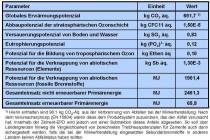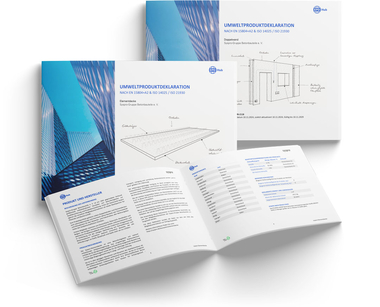EPDs made easy by the environmental calculator
Many companies shy away from the seemingly high cost of preparing life cycle assessments (LCAs) and Environmental Product Declarations (EPDs). This is why member companies of the German Betonverband Straße, Landschaft, Garten (SLG; Association of Concrete Producers for Roads, Landscaping and Gardens) benefit from a new service offering recently launched by the association, the so-called SLG environmental calculator. Association members can use this tool to prepare custom LCAs and EPDs quickly and cost-effectively, such as for all types of concrete paving blocks. See http://www.betonstein.org/service/umweltrechner (in German).
Siegrun Kittelberger, of thinkstep, the management consultancy that was contracted to develop the calculation tool jointly with the association, and Dietmar Ulonska, SLG Managing Director, engage in a dialog to discuss the idea behind this new service.
Siegrun Kittelberger: Environmentally friendly sourcing, green building, EPDs – these are some of the keywords that currently dominate the sustainability debate. Which topics are SLG member companies currently dealing with?
Dietmar Ulonska: Topics related to sustainability have been on the building construction agenda for many years, so it was just a matter of time until these issues became relevant in road construction, landscaping and garden design, too. Our members currently focus on topics such as infiltration and low-noise block pavements and NOx emission reduction, but EPDs also play an increasingly important role.
More than ten years ago, we already assumed that construction methods using concrete blocks had a relatively low environmental impact compared to other building materials, but we were unable to get hold of verified data. In 2008, we performed the first life cycle assessments to underpin our assumption. We used the experience gained in this process to embark on our next endeavors, with the aim to draft an association-wide EPD. We published this EPD for a standard concrete paving block in 2015, so we have built a sound knowledge base in this field during the past ten years.
Kittelberger: Which benefits do SLG members enjoy as a result of publishing the association EPD?
Ulonska: Initially, we wanted to use this association-wide EPD as an awareness raising tool to send a strong signal that the concrete industry has done its homework and that association members were in a position to respond to related enquiries. The most recent step was much more important to us, though – our members can use the environmental calculator launched early this year to prepare LCAs and EPDs themselves and to refer to these documents in their communications. The big advantage of this approach is that companies can tailor their efforts to their own brands and products based on specific data that they gathered themselves. In our view, this is becoming increasingly important especially in the contract business, where there are frequent requests for custom paver sizes, colors and surfaces. This means that contractors can evaluate various scenarios as early as in the design phase in a quick and cost-effective manner if and when required.
Kittelberger: How does the environmental calculator work?
Ulonska: Each member can store its own data, such as recipes or information on electricity consumption, in a secure workspace within the environmental calculator, which links this information to a life cycle assessment database. Both sources are available to then calculate an LCA for a specific paver by only a few clicks. This data can be used on its own, including for product optimization purposes, or it can be entered into an electronic EPD form in order to prepare a product-specific EPD.
Kittelberger: Which specific advantages do your members enjoy as a result of using the environmental calculator?
Ulonska: Our members enjoy major benefits in terms of ease of use, speed and cost. After all, calculating LCA data for various products manually is quite complex and not exactly cheap. Yet many of our members offer an exceedingly wide product range. Those wishing to apply sustainability criteria consistently would thus have to invest an enormous amount of time and labor if they were not in a position to access a smart tool such as the environmental calculator.
In the meantime, we have stored all relevant LCA data at your – thinkstep’s – premises. The environmental calculator accesses this pre-verified, constantly updated information. This step alone results in enormous savings because our members need to enter information into the system manually only to a very limited extent. Add to this the cost benefit arising from our association’s IBU membership.
Kittelberger: How did you launch the environmental calculator?
Ulonska: thinkstep, your management consultancy, presented this tool to us as some kind of prototype in April 2016, and our Board got convinced immediately. We then held a briefing to define the underlying criteria, such as for system performance or the type of information to be provided. thinkstep implemented the tool exactly as we imagined. Further improvements were suggested at web-based workshops held with members. We then presented the final version of the calculator to the general assembly of our members in November 2016.
Kittelberger: What are your next steps?
Ulonska: We will be increasingly referring to the environmental calculator in our communications, both internally and externally. We firmly believe that sustainability will become even more important in future, and we reiterate our assumption that the specific demand for concrete paving block EPDs will continue to rise, which might even apply to contract business scenarios.
CONTACT
Betonverband Straße, Landschaft, Garten e. V.
Schloßallee 10
53179 Bonn/Germany
+49 228 95456-21






